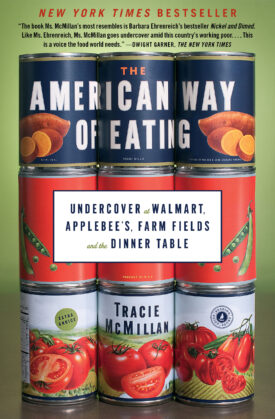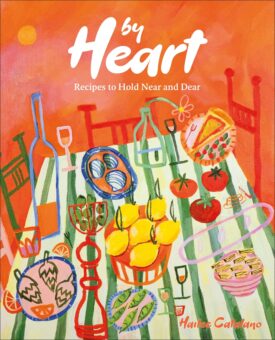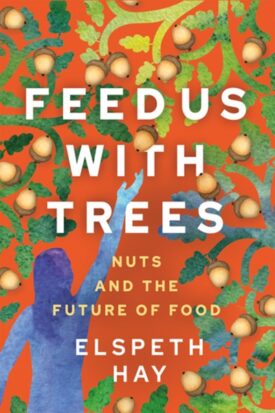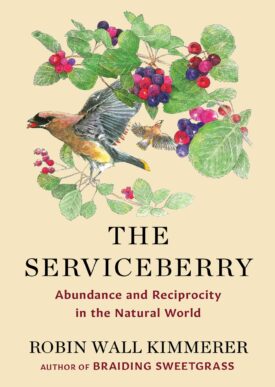What we’re reading this summer
“One benefit of summer was that each day we had more light to read by.” So says Jeanette Walls in her 2009 memoir, “The Glass Castle.” For us at FoodPrint, that means even more time to read about the constellation of topics that interest us most: food, farming, cooking and the complex system that delivers sustenance to our plates. The longer daylight hours let us explore these topics further, whether that means we hummingbird from one book to the next, or hyperfocus on a particular subject to get a deeper understanding. (Both are equally valid ways to laze away a summer afternoon, ideally with a very ripe peach in hand.)
If you feel inclined to follow suit, we have so many roundups of books you could flit between or deep-dive into. Maybe you want to read about seeds and biodiversity, the wide world of fungi, or the industrial food system; or you’re hoping to pique your kids’ interest in environmental stewardship (while also combating the dreaded summer slide). Or perhaps you’re tempted by the midsummer bounty and want some ideas for what to do with all that amazing produce: You’ll find a handful of great suggestions here (plus a book that will help you master the inevitable leftovers game).
We also have a short list of what our staff is reading right now, or looking forward to reading in the second half of summer. It’s a diverse assortment with something for everyone. Your next favorite book could be just a scroll away …
“The American Way of Eating”

by Tracie McMillan
This book explores Tracie’s work going undercover in several jobs related to food — harvesting crops on a farm in California, stocking the produce aisle in a Walmart and working in an Applebee’s kitchen. As part of her work, she also lived off the actual wages these jobs provided to understand the true experience of many Americans and how that impacts the way they eat and interact with food.
— Kristen Link, Digital Marketing Manager
“The Berry Pickers”
by Amanda Peters
Set in the blueberry fields of Maine, this novel follows a Mi’kmaq family from Nova Scotia who travel there each summer to pick blueberries. When the family’s youngest daughter, Ruthie, goes missing, her disappearance sets off a series of hardships for the family. While the disappearance and its impact on the family drive the story, the realities of seasonal farm labor and the Mi’kmaq experience serve as important backdrops to the narrative.
— Kristen Link
“By Heart”

by Hailee Catalano
Internet chef Hailee Catalano released her first cookbook, “By Heart: Recipes to Hold Near and Dear,” earlier this year, in April, but it’s been a great book to work though as summer produce hits its peak. Her recipes really make seasonal produce shine — from simple salads like her butter bean, sungold and smashed cucumber salad to seasonal pastas like her creamy corn orzo. Now that tomatoes are in season, I’m excited to try her BL Double T — a take on the classic BLT that uses toum instead of mayo.
— Natalie Geisel, Social Media and Audience Engagement Coordinator
“The Fish Counter”
BY MARION NESTLE
Giving readers advice about what seafood to buy and eat is always hard because seafood is complicated! No one knows this better than food policy and nutrition expert Marion Nestle, and she’s the very best at cutting through the muck and murk to give clearheaded advice about what to eat and what to avoid. (We have given her the mic several times on our podcast, “What You’re Eating,” because we deeply trust what Nestle — the Paulette Goddard Professor of Nutrition, Food Studies, and Public Health, Emerita, at New York University — has to say.)
Her seminal 2007 book, “What to Eat,” has a new edition coming out this fall and a chapter of it, all about what seafood to eat, has been excerpted into a snappy little volume called “The Fish Counter.” It fits in my bag so I’ll be reading it this summer to get her latest updated advice on how to shop for seafood, including intel on omega-3s and mercury; real talk about the problems with farmed fish; and the limitations of seafood labels.
— Jerusha Klemperer, Director
“Feed Us With Trees”

by Elspeth Hay
“Suddenly, instead of squirrel food, I saw hope.” This is how Elspeth Hay describes her revelation that acorns, and the oak trees from whence they come, are a food source — and in fact for thousands of years were staple crops for humans across the Northern Hemisphere. Before European colonizers asserted their field crop-first agricultural practices, Indigenous people cultivated oak savannas — as well as other forest gardens populated with perennial nut trees like chestnut, hazelnut and beechnut — with intention and care.
I’m only part way through the book, but so far it’s eye-opening and a very engaging read. Interweaving her personal narrative with a larger story of how we’ve lost the thread on traditional, sustainable tree-farming methods, Hay suggests that one solution to our deeply flawed food system may be directly overhead and underfoot.
— Kylie Foxx, Content Editor – Writer
“The Serviceberry”

by Robin Wall Kimmerer
It’s a great reframe of ecology as being more about abundance and gift-giving than scarcity and competition, and an invitation to think about how we could reframe our own interactions — both with the environment and each other — in the same terms.
— Ryan Nebeker, Research and Policy Analyst
“Ratatouille”
If you’ve reached the end of your summer reading list or just need a break, like I did, I highly recommend re-watching — or watching for the first time! — “Ratatouille.” There’s never a bad moment to reinforce themes and messages of overcoming differences and finding common ground, in this case between rats and humans, both of whom, the movie demonstrates, can love food in a deep and obsessive way. Remy the rat wants to stop being merely a “taker,” who steals humans’ leftovers mostly in the form of trash. Instead, he wants to contribute to the world using his culinary talents. The movie does a beautiful job of illustrating how food can make us feel things; that food has a story; and that food, even elevated (read: stuffy) cuisine, should be accessible to all — even rats! The movie does not tackle how food gets from the fields and factories to the walk-in fridge at a restaurant, but it’s a lovely immersion in a world where food matters and where the little guy (Remy the rat, in this case) matters, too.
— Jerusha Klemperer
Other books on our TBR lists:
“A Grain, a Green, a Bean: One Simple Formula, Countless Meatless Meals” by Gena Hamshaw
“All Consuming: Why We Eat the Way We Eat Now” by Ruby Tandoh
“Braided Heritage: Recipes and Stories on the Origin of American Cuisine” by Jessica B. Harris
“Change the Recipe, Because You Can’t Build a Better World Without Breaking Some Eggs” by José Andrés
“The Light Eaters: How the Unseen World of Plant Intelligence Offers a New Understanding of Life on Earth” by Zoë Schlanger
“Tahini Baby: Bright, Everyday Recipes That Happen to Be Vegetarian” by Eden Grinshpan
“They Poisoned the World: Life and Death in the Age of Forever Chemicals” by Mariah Blake
“What Is Queer Food?: How We Served a Revolution” by John Birdsall
Get the latest food news from FoodPrint.
By subscribing to communications from FoodPrint, you are agreeing to receive emails from us. We promise not to email you too often or sell your information.
Top photo by amenic181/Adobe Stock.
More Reading
In a beefy moment, beans?
November 4, 2025
Can extended producer responsibility programs push food companies to use sustainable packaging?
October 16, 2025
The meat industry smeared the Planetary Health Diet. Now its creators are back with more evidence.
October 10, 2025
The latest Global Plastics Treaty talks failed. Where does that leave the plastic pollution crisis?
September 23, 2025
For these cocoa farmers, sustainability and the price of beans are linked
September 17, 2025
This fall, get involved in one of these campus sustainability initiatives
August 26, 2025
A new book says tech-supported industrial ag will feed the world. Agroecologists would like a word.
July 9, 2025
Use a grocery store trip to teach kids environmental stewardship
July 7, 2025
Can rye growers get consumers and retailers excited about rye?
May 19, 2025
